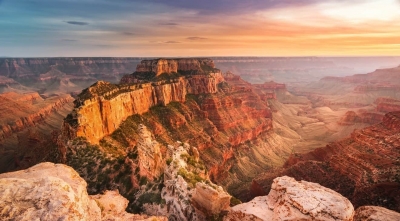
One of the most well-documented geological features of the world, the Grand Canyon is also one of North America’s prized natural wonders. Despite having been well-studied through centuries, there’s a mystery in these layered bands of red rock that reveal millions of years of geological history.
A real-life textbook
This mystery, dubbed the Great Unconformity, corresponds to the missing gap of time in the canyon’s rock record. To help visualise this, imagine the Grand Canyon as Earth’s history book. This means that as we scale down the canyon’s rock faces, we can scan through nearly two billion years of the planet’s past. But this book, however, is missing some pages as there are certain areas in the Grand Canyon where more than a billion years’ worth of rocks have vanished without a trace.
The Great Unconformity has perplexed geologists from the time it has been described. This feature was first described a little over 150 years ago following American geologist John Wesley Powell’s famed expedition in 1869. Travelling by a boat down the Colorado River, Powell was able to observe this feature from the river.
While the feature still remains easily viewable from the river, we haven’t improved our understanding about it. A new study led by the University of Colorado Boulder has attempted to find answers to these with researchers studying the Great Unconformity localities at the Grand Canyon and across North America using new analytical methods in their labs.
History of heat
According to a paper they have published in the journal Geology in August 2021, they believe that they are closer to an answer than ever before. By tracking the history of heat in stone using a method called “thermochronology”, the researchers have been able to explore the transition. They have been able to report a series of small but violent faulting events that may have rocked the region at a time when the ancient supercontinent Rodinia was breaking up. The ensuing melee I would have likely torn the structures around the canyon, pushing the rocks and sediments to wash away – thus making it seems now like they have disappeared without any trace.
Even though a lot still needs to be done to establish the answers beyond doubt, the researchers certainly have a starting point. And even if they don’t end up with anything better, they might have the satisfaction of seeing the geological history of one of the worlds most picturesque landscapes unfold in their labs.
Picture Credit : Google




